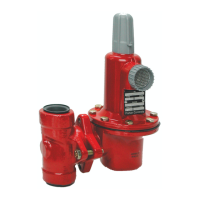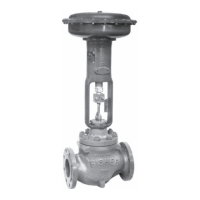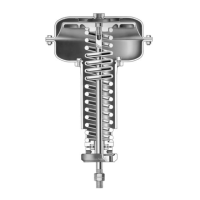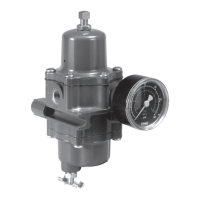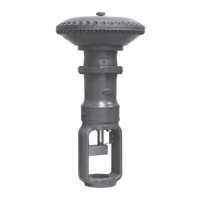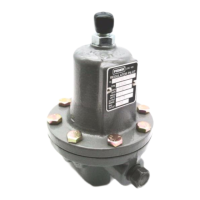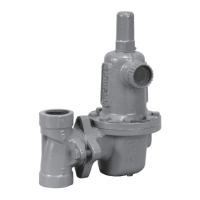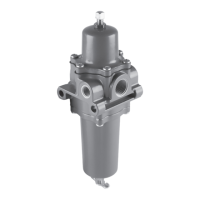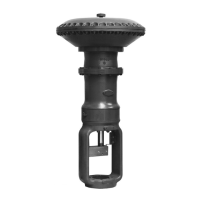44 ซ.บรมราชชนนี 70 ถ.บรมราชชนนี ศาลาธรรมสพน์ ทวีวัฒนา กทม. 10170.
website: https://www.add-furnace.com/ โทร: 02-888-3472
Line ID: @add11 e-mail: add028883472@gmail.com
adjustable, is adjusted by loosening the locknut, if used, and
turning the adjusting screw or handwheel clockwise to increase
or counterclockwise to decrease the outlet pressure setting.
Re-tighten the locknut to maintain the adjustment position.
Shutdown
First, close the nearest upstream block valve and then close
the nearest downstream block valve (when used). Next, open
the downstream vent valve. Since the regulator remains open
in response to the decreasing downstream pressure, pressure
between the closed block valves will be released through the open
vent valve.
Maintenance
! WARNING
To avoid personal injury or equipment damage,
do not attempt any maintenance or disassembly
without first isolating the regulator from system
pressure and relieving all internal pressure.
Regulators that have been disassembled for
repair must be tested for proper operation
before being returned to service. Only parts
manufactured by Emerson Process Management
Regulator Technologies, Inc. should be used for
repairing Fisher
®
regulators. Relight pilot lights
according to normal startup procedures.
Due to normal wear or damage that may occur
from external sources, these regulators must
be inspected and maintained periodically. The
frequency of inspection and replacement of
the regulators depends upon the severity of
service conditions or the requirements of local,
state, and federal regulations. Even under ideal
conditions, these regulators should be replaced
after 15 years from date of manufacture or sooner
should inspection reveal the need.
Failure to do the following could result in personal injury or
property damage. Visually inspect the regulator each time a gas
delivery is made for:
1. Improper installation;
2. Plugged or frozen vent;
3. Wrong regulator or no regulator in the system;
4. Internal or external corrosion;
5. Age of the regulator;
6. Any other condition that could cause the uncontrolled
escape of gas.
Make sure the regulator vent, vent assembly, or vent tube does
not become plugged by mud, insects, ice, snow, paint, etc. The
vent screen aids in keeping the vent from becoming plugged,
and the screen should be clean and properly installed.
Replace any regulators that have had water in their spring case
or show evidence of external or internal corrosion. Checking for
internal corrosion may require complete removal of the adjusting
screw and shutdown of the gas system. Closely examine
regulators directly connected to the container valve by means of
a solid POL adaptor (horizontal mounting) for signs of corrosion.
Correct any improper installations.
Older regulators are more likely to catastrophically fail because
of worn or corroded parts. Replace regulators over 15 years
of age; other service or environmental conditions may dictate
replacement of the regulator before it becomes 15 years old,
refer to Fisher Bulletin LP-32.
Regulator Repair
Regulators that have been disassembled for repair must be
tested for proper operation before being returned to service.
Only parts manufactured by Emerson Process Management
Regulator Technologies, Inc. should be used to repair Fisher
regulators. Be sure to give the complete type number of the
regulator when corresponding with the factory.
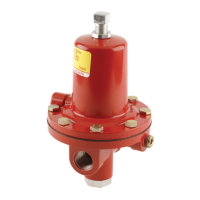
